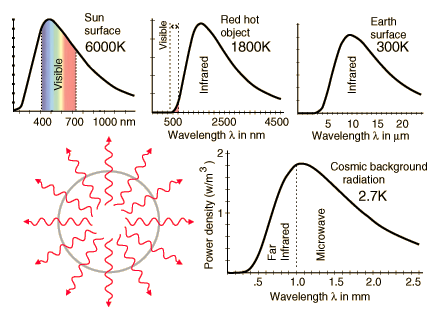Usually, I refrain from addressing silly scientific claims. But since some people seem determined to go to any extent to ‘disprove’ greenhouse gas theory, in this instance I am going against my better judgment to answer a particularly crazy article entitled, “Roy Spencer’s Fatal Error: Believing the Vacuum of Space Has a Temperature“.
I can’t tell whether John O’Sullivan really believes what he has written there. While I will assume he does, it still feels like I’m being challenged by a supermarket tabloid to offer proof that Elvis was not abducted by space aliens.
But I digress. The basic issue is that the radiative energy budget of the Earth involves energy GAIN from the sun (primarily at visible wavelengths, less at infrared [IR] wavelengths), and then energy LOSS to the ‘cold’ depths of outer space, which is mostly in the IR.
It is usually assumed in radiative energy budget calculations of the Earth that there is no IR emission toward the Earth from outer space, but this is not strictly true. Space emits radiation like a blackbody whose temperature is 2.7 K, and a portion of this emission is indeed in the infrared, as was verified by the COBE satellite experiment:
So yes, Virginia, outer space does have a temperature, and it is a very cold one. But even if that temperature was 0 K (in which case one might metaphysically ask whether zero absolute temperature actually means no temperature), the practical result would be the same: the thermal radiation emitted by a colder object CAN influence the energy budget, and therefore the temperature, of a warmer object.
In the case of the greenhouse effect, downwelling infrared sky radiation, even though it is usually less intense than the upwelling radiation from the ground, keeps the ground from cooling much faster at night than if the atmosphere was not there.
No laws of thermodynamics are broken, because the net flow of radiation is still from the warmer object to the cooler object, despite the fact that the cooler object (the atmosphere) keeps the warmer object (the ground) warmer than if the atmosphere was not there. That’s the (so-called) greenhouse effect.
You can perform an experiment yourself, with an inexpensive handheld IR thermometer (which is really a radiometer) and (for example) a side-by-side refrigerator/freezer. Point the IR thermometer, which will be close to room temperature, at the inside of the freezer (say at 0 deg. F), and the temperature of the freezer viewing side of the thermopile within the thermometer will drop, due to IR energy loss from the thermopile toward the freezer. Circuitry measures the rate of temperature drop and calculates the temperature of the object you are viewing (it also assumes an IR emissivity, usually close to 1.0).
But if you then point the IR thermometer at the inside of the refrigerator (say at 40 deg. F), then the temperature of the refrigerator-viewing side of the thermopile will rise, even though the refrigerator temperature is colder than the handheld thermometer. So, yes, Virginia, cold objects (the refrigerator) can make warmer objects (the thermopile in the IR thermometer) even warmer still!
If the Sky Dragon Slayers want to keep claiming otherwise, then fine. Maybe someday they will receive a Nobel Prize.
And maybe someday Elvis will return from space with a great new weight loss product.

 Home/Blog
Home/Blog




